Stepping out of the busy streets of Paris for a day trip to Versailles honestly felt like slipping into another universe. The palace’s sheer size—especially the Hall of Mirrors and those wild, sprawling gardens—hits you right away.
It’s easy to see why Versailles ranks as one of the top day trips from Paris. If you’re on the fence about whether it’s worth the trek, well, the grandeur and history here might just leave you speechless.
From the gold-dripped State Apartments and the king’s bedroom to fountains sparkling in the sun, every inch of Versailles shouts stories from its royal past. I wandered through the palace and gardens, totally swept up in the luxury and drama of French royalty.
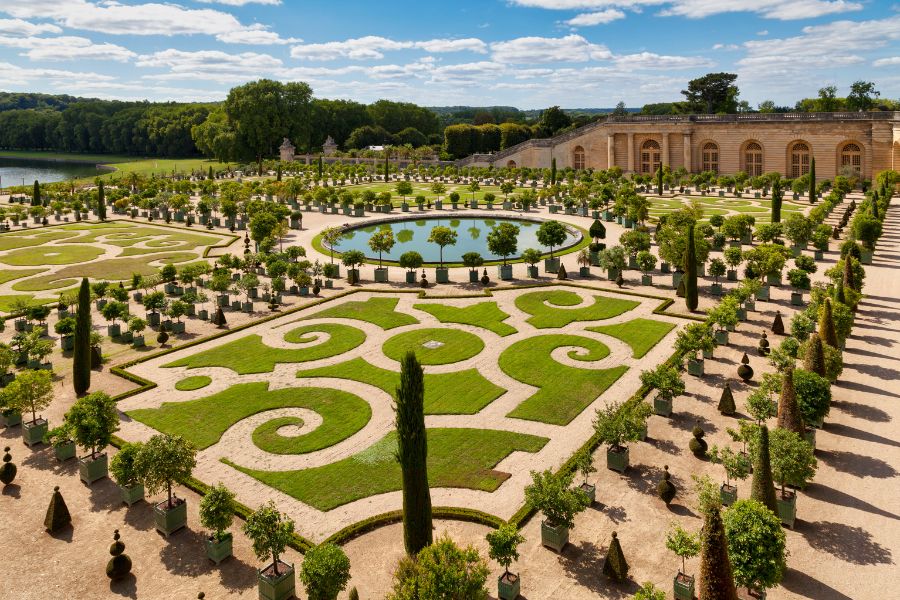
It’s not just a bunch of pretty rooms—it’s a living slice of history, full of surprises around every corner.
If you want to see a side of France that’s nothing like Paris’s city lights, you can’t skip Versailles. The scale and magic of this place sticks with you long after you’re gone.
Planning the Perfect Versailles Day Trip
Visiting Versailles for a day is a chance to step into French royal history and see some truly stunning art, gardens, and architecture. Planning ahead really helps dodge crowds, save a bit of cash, and keep things stress-free.
Choosing the Ideal Time to Visit
I found out pretty quickly that timing is everything at Versailles. Tuesdays, weekends, and French holidays turn the place into a zoo.
I always aim for a Wednesday or Thursday—things feel way calmer, and you can actually breathe in the palace halls and gardens.
Getting there right when the gates open (usually 9 AM) gave me a nice head start before the big bus tours rolled in. By late afternoon, after 3 PM or so, the crowds start to thin out again.
In summer, the evening fountain shows are a blast, but those pull in more people. If you want to enjoy the gardens, avoid rainy days.

Spring and early fall are my favorite times—great weather, way less heat, and fewer crowds than July or August.
Transport Options from Paris
Getting to Versailles from Paris is simple enough. I usually hop on the RER C train line—it takes about 45 minutes from central Paris to the Versailles Château Rive Gauche station.
From there, it’s just a 10-minute walk to the palace gates. If you want more comfort, private tours or shuttle buses leave from Paris hotels.
They cost more, but you won’t have to mess with train schedules.
Transport Options Table
| Option | Duration | Cost | Pros |
|---|---|---|---|
| RER C Train | 45 mins | Low | Cheap, runs every 15 mins |
| Tour Bus | 1 hour | Higher | Direct, easy for groups |
| Private Car | 45 mins | Highest | Most flexible, door-to-door |
No matter how you go, buying a round-trip ticket saves you hassle at the end of a long day.
How to Make Reservations and Buy Tickets
Booking tickets in advance is a must, honestly. I always buy mine online from the official Château de Versailles website or a trusted platform.
That way, I skip the monster entrance lines, especially on busy days. There are a few ticket types.
The “Passport” ticket gets you into the main palace, gardens, Trianon estate, and special shows. If you only want certain areas, there are garden-only or palace-only tickets too.
They enforce timed entry now, so I always pick a morning slot for fewer crowds. Having tickets ready on my phone or printed made entry quick.
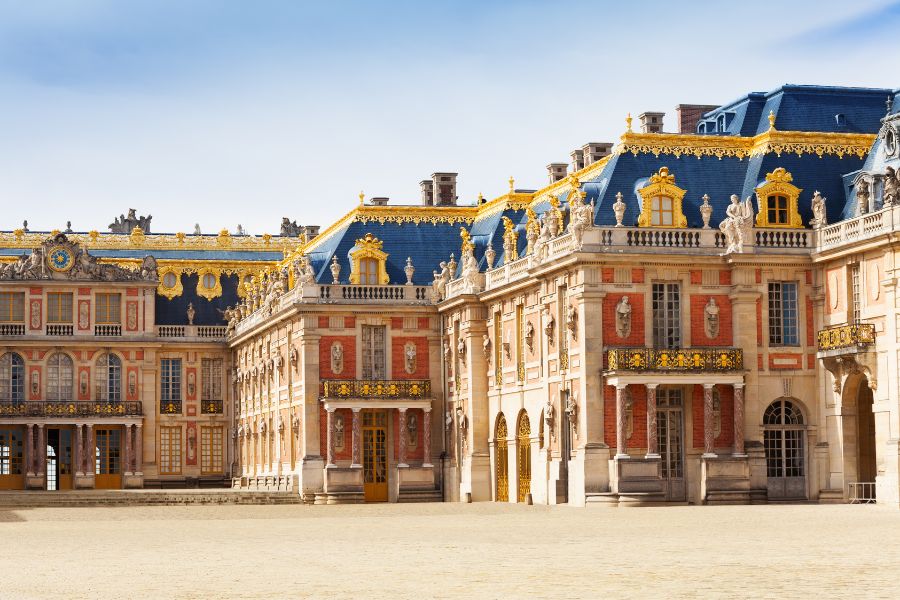
Some passes even bundle train fare and palace entry, which can be a huge time-saver.
Discovering the Iconic Hall of Mirrors
Nothing at Versailles quite matches the drama and shine of the Hall of Mirrors. I walked in and just stood there, totally blown away by the mix of history, wild architecture, and royal legends.
History and Royal Significance
Back in the late 17th century, builders replaced a terrace overlooking the gardens with what became the Hall of Mirrors. Architect Jules Hardouin-Mansart and decorator Charles Le Brun created it at King Louis XIV’s command—he wanted a space to show off France’s power.
The king and his court gathered here for balls, treaties, and daily processions. I could almost see the Sun King himself gliding through, every step calculated to impress.
Maybe the most famous moment? The Treaty of Versailles was signed here in 1919, ending World War I. This room isn’t just pretty—it’s witnessed some world-changing moments.
Architecture and Design Highlights
Inside, I found myself surrounded by 357 mirrors on one side and towering windows on the other. Sunlight poured in, making the gold, marble, and crystal chandeliers shimmer like crazy.
The mirrors weren’t just for looks. In the 1600s, glass was super rare and expensive, so this room screamed wealth and helped kickstart France’s mirror-making industry.
Everywhere I looked, there were gilded statues, ceiling paintings, and fancy patterns carved into doors. The hall stretches over 230 feet, so walking the whole thing feels more like wandering through a story than just crossing a hallway.
Top Photo Opportunities
The Hall of Mirrors is packed with photo ops, but a few spots stood out for me.
- The center of the hall is perfect if you want that endless chandelier-and-reflection shot.
- I got the best natural lighting near a window, especially in the afternoon when the sun hits the mirrors just right.
- For those Instagram moments, look up—the ceiling paintings from Louis XIV’s reign make for some dramatic angles.
- Early mornings or close to closing time are best if you want fewer people in your photos.

Insider Tips for Navigating Crowds
The Hall of Mirrors is almost always packed, but you can still enjoy it without getting swallowed by the crowd. I bought my ticket online ahead of time to skip the main line.
Arriving right when the palace opens or in late afternoon made a huge difference for me. Most tour groups come through midday, so planning around them helped me find quieter moments.
I also wandered to the ends of the hall for some peace. Pausing by the windows, I soaked in the view and managed a few photos with hardly anyone else around.
If you want more than just a walk-through, a guided tour is worth it. The guides know cool details and the best places to stand for that less crowded feel.
Exploring Versailles Palace: A Sensory Journey
Every room in Versailles felt like a living museum. Details jumped out at me—the rich fabrics, gold trim, and sunlight bouncing off polished marble.
The King’s Apartments
Stepping into the King’s Apartments, I actually got a sense of royal life. The grand bedroom really wowed me.
A velvet-canopied bed sits right in the center, surrounded by heavy curtains and priceless tapestries. Gold accents light up the walls, and chandeliers sparkle above.
I walked past the Council Chamber and noticed lavish furniture and secret doors the king used. Every room seemed more detailed than the last.
Paintings of battles and French history lined the walls. The scent of wax polish, mixed with a hint of old perfume, hung in the air.
Standing in front of antique mirrors, I could almost hear the rustle of silk gowns and soft footsteps of courtiers.
Quick tip: The bedrooms and galleries get crowded fast. Arriving early or booking a skip-the-line ticket made my visit much smoother.
Grand Chapel and Royal Opera
The Grand Chapel honestly took my breath away. White marble columns soared up to a painted ceiling full of angels and blue skies.
When sunlight streamed through the tall windows, the golden organ pipes glowed. A choir sang here every morning for the royal family.
I tried to picture Louis XVI attending mass under those arches and gold accents. The space felt almost sacred, and I stood quietly for a bit, listening to the echoes.
Next, I wandered into the Royal Opera. The horseshoe balconies and velvet seats looked beautiful, but the acoustics blew me away.
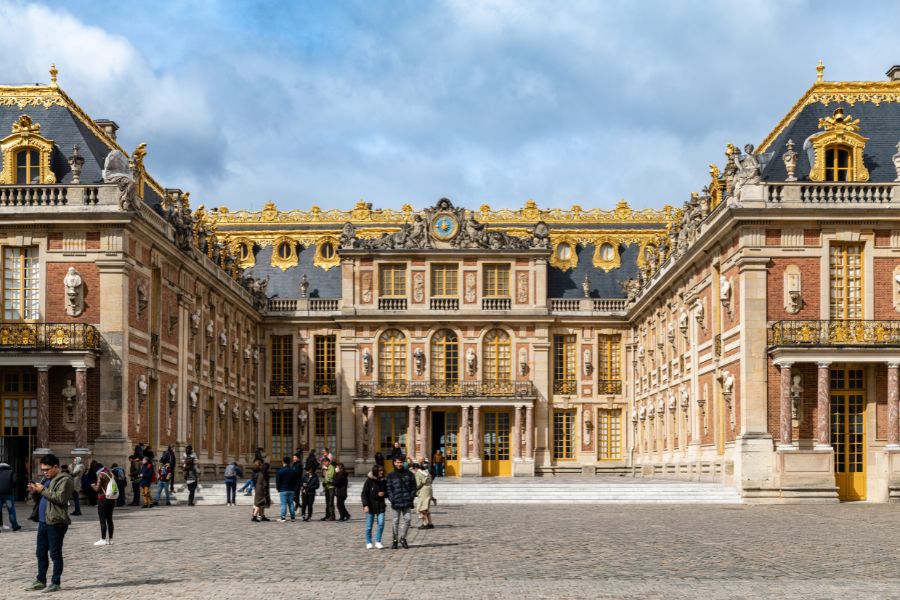
Even a whisper seemed to travel everywhere. The Opera still hosts shows, and honestly, I wish I could catch a concert there.
If you’re visiting, check the schedule—sometimes there are public performances. I left feeling like I’d just crashed an 18th-century royal party.
Unforgettable Experiences in the Gardens of Versailles
The lawns stretch out forever, but what really got me were the living works of art tucked among the trees and fountains. Water and music displays, plus secret groves filled with sculptures, made wandering the grounds a highlight of my day.
Fountain Shows and Musical Gardens
Walking through the Gardens of Versailles, I quickly realized you have to check the schedule for fountain shows. On certain days, jets of water leap into the air, set perfectly to classical music by composers like Lully and Rameau.
It’s not just a show—it’s a way to feel what royal entertainment was like centuries ago. Standing by the Grand Canal, I watched water dance from the Bassin de Neptune and the Latona Fountain.
Music echoing off the marble and water added this magical layer. For the best experience, I recommend arriving early for a good spot, and maybe bringing a snack to enjoy on a shady bench while the show goes on.
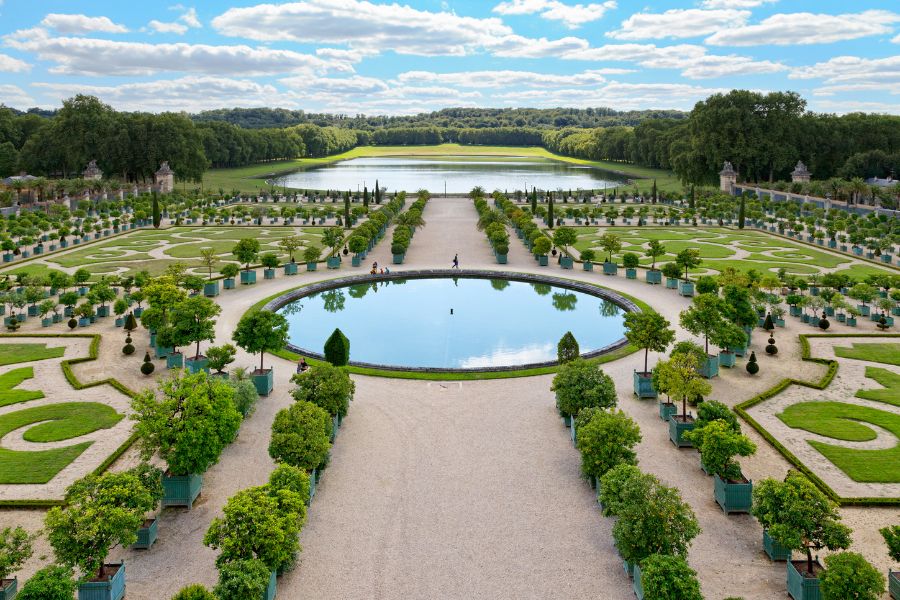
Here’s what helped me:
- Get tickets ahead of time for Musical Fountains and Gardens days.
- Wear comfy shoes—these gardens are massive.
- Download the garden map so you don’t miss the main fountains.
Hidden Groves and Sculptures
Beyond the main paths, I found winding trails that led into lush groves. Some of these “bosquets” feel like secret outdoor rooms, each with its own vibe—from spiraling hedges to fountains tucked away from the crowds.
The Ballroom Grove felt especially dramatic, with marble steps and a party vibe from another era. Around so many corners, I stumbled onto statues nestled in greenery—gods, nymphs, heroes frozen in marble.
Some groves even have unique fountains or sneaky water tricks. I loved the quiet corners for catching my breath and snapping photos without a crowd.
A few groves only open during special events or musical garden days, so I checked which ones were accessible before my visit.
My advice? Wander off the main path whenever you can. Some of Versailles’ best surprises hide away from the busiest gardens.
Beyond the Palace: The Estate of Trianon & Marie Antoinette’s Hamlet
Leaving the main palace led me into a quieter world full of elegance and a touch of whimsy. These hidden corners—often missed by rushed visitors—show a whole different side of Versailles.
Grand Trianon
My first stop after leaving the buzz of the chateau was the Grand Trianon. This pink marble palace was built as a retreat for King Louis XIV, and stepping inside, I immediately felt the contrast to the crowded main palace.
Here, the rooms are filled with natural light and views of formal gardens. The ceilings are lower, the decor more restrained, and the whole atmosphere is refreshingly peaceful.
I stood in front of the rows of columns, admiring the way they opened right onto lush lawns and carefully trimmed hedges.
The Grand Trianon is used today for official events, but when I visited, I could wander at my own pace. I loved strolling down the wide paths and getting lost in the symmetry of the gardens.
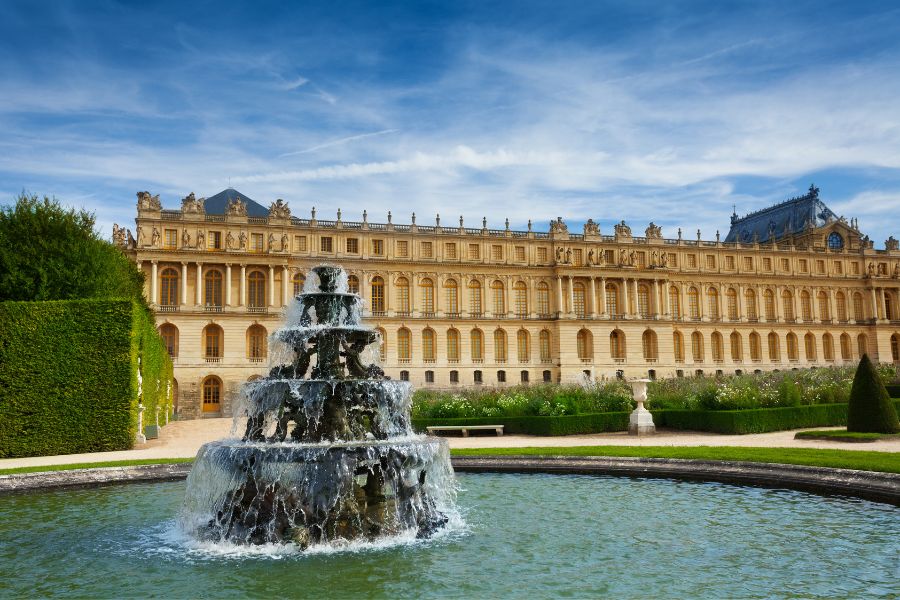
Highlights include:
- Pink marble colonnades
- Polished, understated rooms
- Sprawling gardens just beyond every window
It’s a spot that feels both grand and inviting, and the crowds rarely match those in the palace.
Petit Trianon
Next, I wandered over to the Petit Trianon. Louis XVI actually gave this smaller chateau to Marie Antoinette as a gift.
Walking inside, I immediately sensed how her life must have changed here. The place feels nothing like the stiff routines of court.
The building gives off a quiet, understated elegance. Cozy pastel rooms never feel cramped, and sunlight just pours through those tall windows.
Most of the furniture and decor show off Marie Antoinette’s own style—soft colors, delicate patterns, and a ton of little details.
Quick tips:
- Smaller groups mean less waiting.
- Audio guides really help explain what’s going on in each room.
It’s easy to imagine her here, reading or playing music, or just trying to get away from all the pressure that came with being queen.
The Charming Hamlet
Just a short walk from the Petit Trianon, I stumbled into one of Versailles’ most unusual corners—Marie Antoinette’s Hamlet. She wanted a taste of “simpler” rural life, so she had this charming little village built far from the pressures of the royal court.
Honestly, it looked like something out of a storybook. Thatched cottages sat along winding paths, and a small lake reflected flower and vegetable gardens. I saw ducks paddling around the pond and spotted farm animals behind old wooden fences.
As I wandered through the Hamlet, I actually felt like I’d escaped to the countryside. The houses seemed quaint but surprisingly cozy, each with its own purpose. There’s a dairy, a bakery, and even a real working farm.
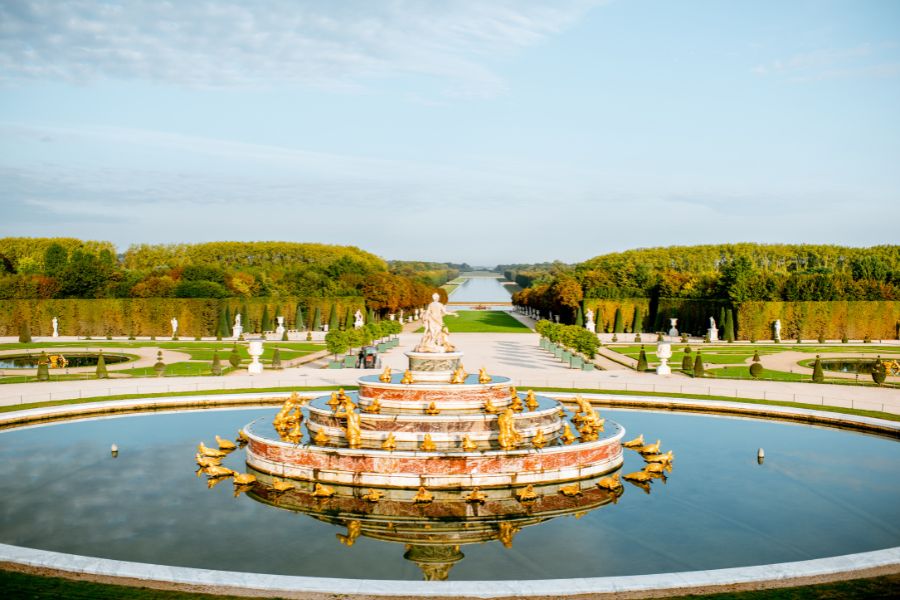
Visitor note:
Entry comes with Versailles Estate tickets, but you’ll want comfortable shoes—the walk’s a bit long if you plan to see everything.
When I paused by the water, I could see why Marie Antoinette slipped away here to relax and entertain her friends. For a moment, it almost felt like the rest of the world faded away.

